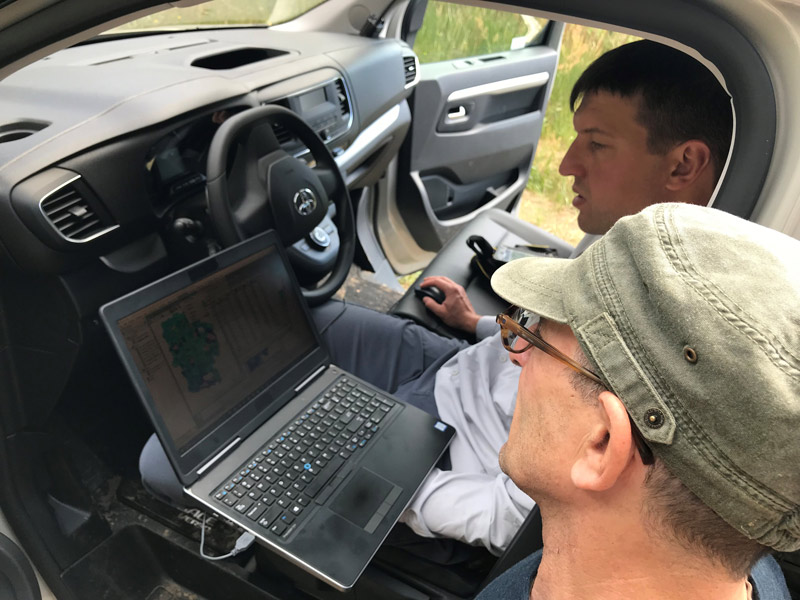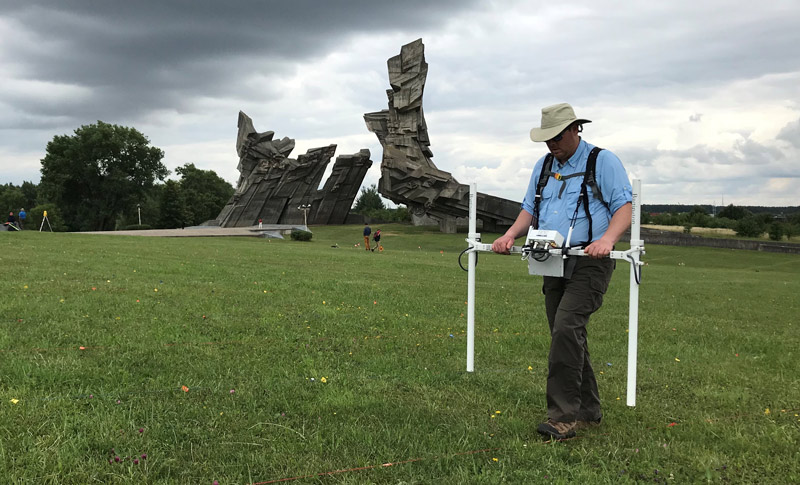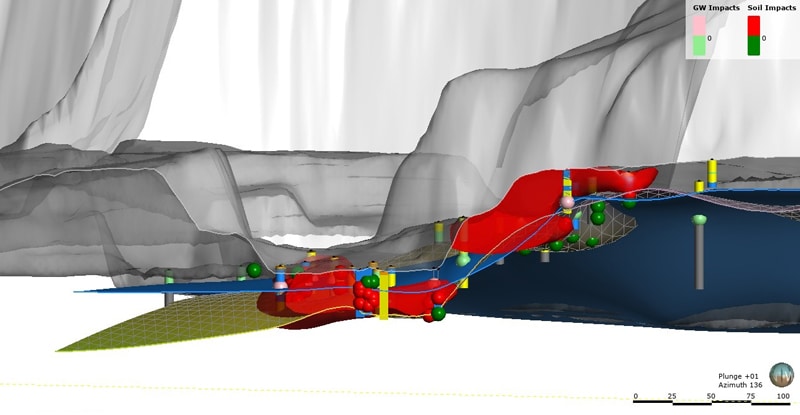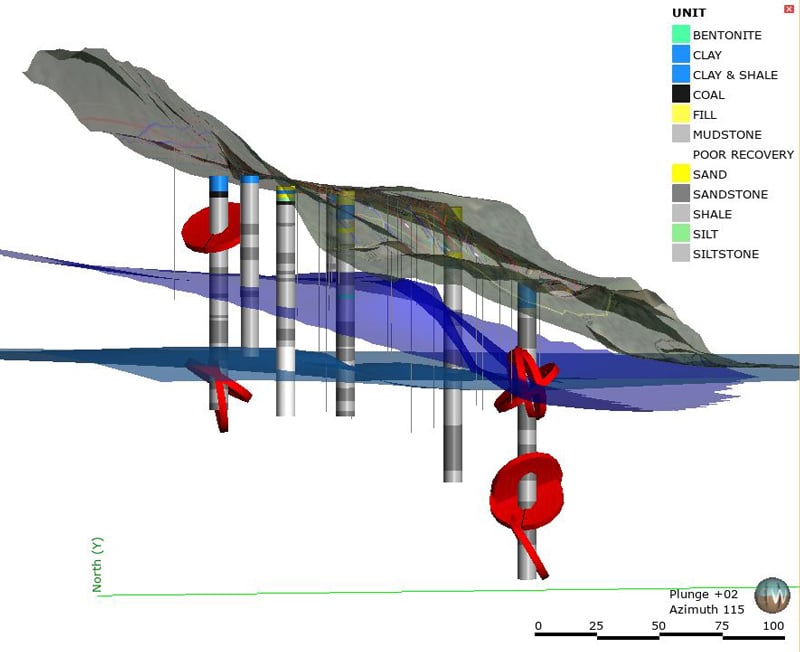Desktop site visits went from futuristic to vital overnight. Just one month earlier, geophysics teams still travelled widely across the globe as part of their investigations.
“We were also getting together for client meetings and the project team was in the office. We were hovering over people’s computers and gathering around printouts. So, that was the old normal,” says Alastair McClymont, principal geophysicist at Advisian.
Alberta, a traditional powerhouse of Canada’s economy, has shouldered a double hit of falling oil prices and then the COVID-19 pandemic.
Alastair himself was the first on his team to quarantine. He was flying back from a family holiday in New Zealand when the 14-day self-isolation recommendation took effect. They had to adjust, and fast.
“I was stuck at home and immediately had to work remotely while my colleagues were still able to access the office. But for me, as a team leader, it was a little bit problematic.”

The day everything stopped
Days later, everyone joined him. Their office arrived in pieces at their doorsteps as Advisian sent over monitors, tools, and equipment to make the transition smoother.
After the scramble to set up, reality and uncertainty set in – work had changed, what now?
“It seemed like work had just suddenly come to a grinding halt. We weren’t sure what clients were going to do, what projects we’d have that were still alive, and how we were going to keep going,” says Alastair.
Client emails spilled into their inboxes but now with a different subject: COVID-19 Health, Safety, and Environmental plans. Collecting field data and running surveys is a key part of geophysics that can’t be done from a dining room table.
“That was one of the biggest worries for us was: Are they going to take a zero-tolerance policy to fieldwork, or are they going to allow it to keep going?”
Mixed messages over the first few weeks from the government, media, and local health services added confusion as the rules around social distancing evolved.
Socially distant fieldwork

His team was lucky, some of their environmental projects were deemed essential and fieldwork moved ahead – just differently. Three people from Alastair’s team went on their first site visit with a COVID-19 mitigation strategy in place.
“They all had to travel in their own vehicles and stayed in hotel rooms with kitchenettes, so they were accessing their own food. They had lots of disinfectant wipes,” Alastair explains.
“There are very careful protocols around social distancing while they’re working in the field. And yet, we completed that work which is great because it demonstrated that we could operate within the new restrictions.”
The good news was that field work was still possible. Yet, there would be less of it short-term as projects got postponed.
“I think the biggest impact was the uncertainty of where work is coming from, but in terms of completing work, it’s actually been a relatively easy challenge to overcome with all these new digital online tools.”
Alastair’s team began cracking open their past projects, digging into the models to discover where they could get more from the information. They found an untapped opportunity, using the data their clients already had to its full potential.
“We’re lucky in that we have some projects that are all desktop work as opposed to field work, and some of them were using 3D modeling software.”
With data, opportunity
One client reached out to request an updated model, adding archived data that Advisian had supplied years ago and from other contractors. Integrating diverse data into models was something Alastair’s team had been doing for years – suddenly it was a silver lining.
“They asked us to go back into our data archives and pull out old geophysics data that we collected to see how it correlates with the other sources of data they have – borehole data, chemistry data – and put it together and try and tell a story to develop a conceptual site model.”

Many environmental clients rarely see the full picture of what they have on their properties. They make major investments to receive massive amounts of data, but rarely benefit from seeing it all together.
“What they have is a series of reports done by a variety of different consultants. And, they’ve been doing their best to try and understand what’s going on, based on looking at these reports in isolation,” says Alastair.
“It’s incredibly powerful to then pull it all together and produce these 3D site models that they can then revisit and look at different aspects and make correlations.”
With environmental work going digital in the short term, more companies will likely want to get the full value from their current data.
“I think that’s the future, especially in our industry. It’s not just about going out there and getting new data – it’s taking advantage of what you have in your archives and in your databases and using it effectively.”
Clients can also discover where they have data gaps, allowing them to make more cost-effective decisions to guide future field programs.
Turning data into a story

Alastair already used visual tools to communicate data and ideas with clients – those skills have now made the full digital leap. His team embeds images and video animations of 3D models as well as 2D cross sections into presentation slides, using captions to explain them on video calls.
Clients have gotten really excited about new ways to get hands-on with data. Alastair sends links to interactive web browser-based models, which offer the ability to view, slice, and navigate models easily – without needing any modelling background or software.
“The upside of this is that it’s pushed us to get more creative on how we present our data,” says Alastair.
“We found that creating these animations has been really quite powerful, that your clients can just click play on an animation and have it tell a story.”
Before the pandemic, clients would receive a report and then meet with Alastair’s team to understand the figures. Now, with video conferencing and digital data visualisation tools, Alastair sees a new and improved normal.
“If we can create digital content to help tell a story more effectively… maybe we’ll come out on the other side with these extra tools and ideas that will improve our business offerings.”





